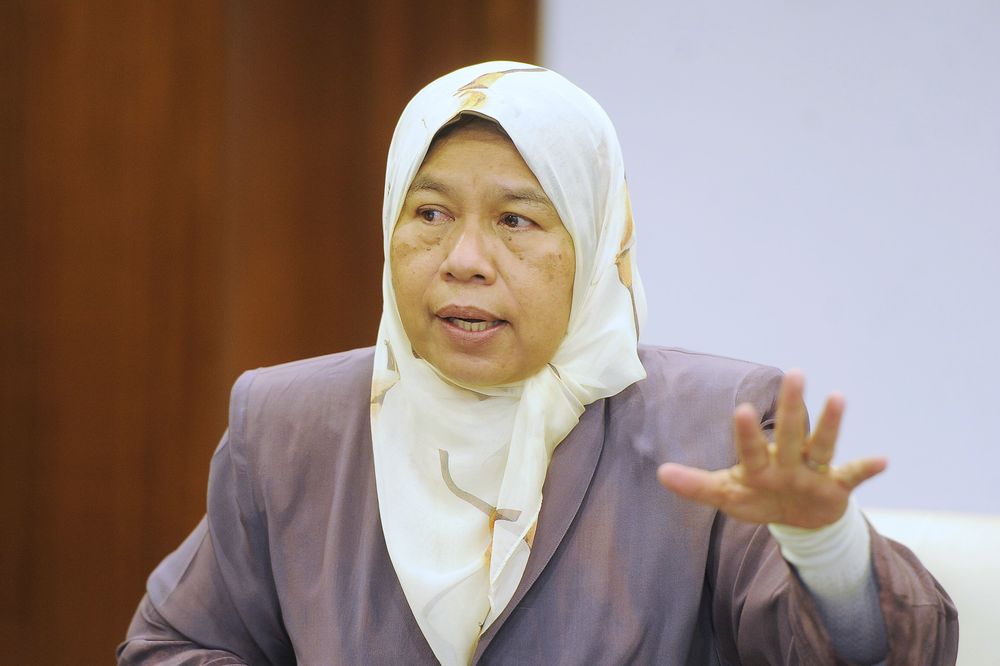KUALA LUMPUR, April 23 — In her first term as housing and local government minister, Zuraida Kamaruddin plans to raise firefighters’ salaries in recognition of their service.
In an exclusive interview with Malay Mail recently, the Pakatan Harapan (PH) minister explained that part of her plans to revamp the Fire and Rescue Department is to improve their service and remuneration scheme through the Public Service Department’s (PSD) rank grading system.
“So the grading (system for Fire and Rescue Department personnel) has to be studied, relooked, revamped and reformed.
“I am very impressed (with the service) because all this while, we were not close to the Fire Department, but when I joined the ministry, I found out that the Fire Department is under my portfolio.
“So I got close to the ground to see that they are like my grassroots and saw the nature of their job and the kind of sacrifices that they make. For instance, like the Sungai Kim Kim incident, they are the first ones to go in and make sure everything is okay, and they are the last ones out.
“So these are the kinds of services of these unsung heroes that are not seen,” Zuraida pointed out.
Currently, the lowest grade for firefighters is a fire officer (KB19), a position which requires SPM qualifications. A fire officer starts with a minimum salary of RM1,360 and a maximum salary of RM4,052, with RM100 annual increment until the maximum limit is reached.
The highest rank in the service, which is the chief fire commissioner (JUSA A), can earn a basic salary of between RM8,465 and RM17,331 based on the years of service.
JUSA A is the highest tier in the civil service. Those who attain this position are eligible to enjoy various allowances, which are an entertainment allowance (RM4,000), housing allowance (RM2,000), special incentive allowance (RM1,250), domestic help allowance (RM500), permanent JUSA position allowance (RM2,500) and housing maintenance allowance (RM166).
Besides putting out fires, the service is also deployed during floods, environmental pollution incidents, traffic accidents, natural disasters, search and rescue (including cats stuck in trees) and the capture of dangerous animals such as venomous snakes when the Forestry Department is unavailable.

Reviewing the National Fire Department Policy
To achieve this goal, Zuraida plans to review and revamp the National Fire Department Policy.
Not only is she intent on improving its pay scale, changes in the national policy will also look at expanding the service’s coverage to include remote locations in the country.
“We are going to have to look into the needs of the fire stations. We have to explore. For instance, now we have Categories A, B, C and D.
“But we have to look into the far-flung areas so we are going to come up with category E —where we should look into fire fighters in islands, longhouses, remote areas,” she said.
Furthermore, PKR’s “Iron Lady” is also looking into improving the department’s standard operating procedures — particularly on enhancing their rescue operating procedures — to prevent the deaths of firefighters.
Monetising the service’s assets
Meanwhile, Zuraida also wants to capitalise on the department’s training assets in Terengganu and find a way to monetise them in order to cover operating and maintenance costs for the department’s academy.
One of her proposals involves turning the academy into a regional hub for firefighting training by taking advantage of the various simulations provided at the Terengganu training grounds.
“We have quite an impressive training centre in Terengganu because it has simulations of various models such as a train coach. How do you handle a train coach that is on fire, or an aircraft cabin, buildings? All these simulations are there.
“We are using it to train our people and that is our academy. So now I want them to look more progressive in capitalising these assets, we sell it to foreign countries to come and do their training here.
“So this will get it some income to cover the maintenance of the facility and improvement of the academy. Definitely (this will also create an) exchange of knowledge,” she said.
Her target market for this endeavour will be Asean nations — particularly Singapore and Brunei — as both of them are tiny nations without a lot of firefighting training facilities.
At the same time, Zuraida said she will be engaging the private sector, especially the manufacturing sector, to contribute to the development of the academy.
“When there’s a better fire policy, the ones benefiting will be the factories and commercial areas.
“Now I want to engage with them so they can contribute to the development of my academy. It’s become their CSR (corporate social responsibility), contribute and we can improve and when we are better, they will benefit the most,” she said.





















